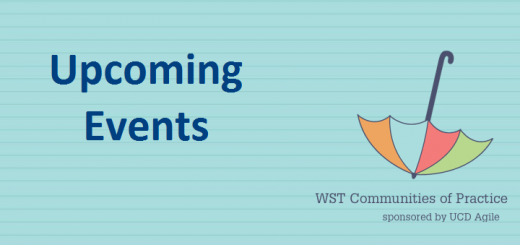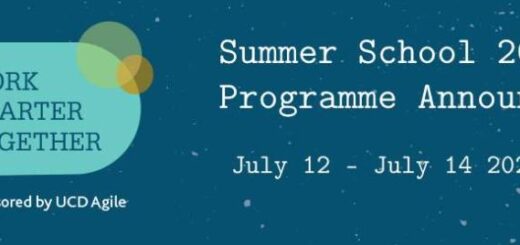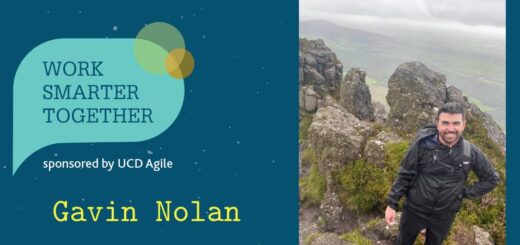Unleashing ChatGPT: A University Administrator’s Journey to Enhanced Productivity
In UCD Agile, we are constantly on the lookout for innovative ways to enhance our ways of working, to continually improve, and provide more value to the staff that we support. Recently, in preparing for a Work Smarter Together Summer School workshop titled “Mastering Google Sheets Timelines,” I turned to technology to streamline my lesson planning process. The result? An engaging and comprehensive session that left participants equipped with practical skills they can immediately apply.
The Challenge: Crafting a Well-Structured Lesson
The challenge lay in crafting a lesson plan that not only covered the intricacies of Google Sheets Timeline View (Figure 1) but also ensured a hands-on experience for participants. The lesson plan needed to be clear, actionable, and cohesive, guiding participants through the process of creating timelines, applying data validation, and using conditional formatting effectively. In addition, I needed to produce some materials for the workshop, most notably a sample dataset containing realistic activities, and plausible start and due dates that I could turn into a Google Sheets Timeline for demonstration purposes.
Figure 1. Google Sheets Timeline View
Enter ChatGPT
To address these challenges, I turned to ChatGPT, an AI-powered language model developed by OpenAI. ChatGPT proved to be an invaluable assistant, helping me create a well-structured lesson plan that aligned with the session’s objectives. By providing ChatGPT with step-by-step instructions for using Google Sheets Timelines, I received a detailed, organised, and comprehensive lesson plan.
However, ChatGPT’s contributions didn’t stop there. Not only did I use it to create the lesson plan, I prompted it to generate an event management plan for a hypothetical event. This event plan served as a concrete foundation for the demonstration during the session.
For me, someone who is not an event manager, creating an event management plan, particularly one with a realistic set of activities and timelines, is a meticulous and time-consuming task. The same could be said for the lesson plan, for I have no formal training in teaching. Here’s where ChatGPT demonstrated its true value. With just a few simple prompts, it eliminated the tedium typically associated with generating such detailed plans. The result was not only a time-saving endeavour but also a more immersive and effective learning experience for participants.
Collaborating with an AI assistant
Collaborating with ChatGPT felt like brainstorming with a colleague well-versed in educational techniques, Excel, Google Sheets, and event management. ChatGPT’s ability to distil complex instructions into clear, concise explanations is truly remarkable.
Limitations
However, ChatGPT, like any tool, comes with its limitations. For instance, while it was instrumental in generating content, it provided instructions that exceeded the time constraints I had set. In this case, the timings provided by ChatGPT amounted to 90 minutes, whereas the session was intended to last only one hour. It’s essential to recognise that AI-generated content may require manual review and adjustment to align with specific requirements and constraints.
While ChatGPT can provide valuable assistance, it’s important to note that the material it produces may contain errors or require fine-tuning. In my preparation for the lesson, I took the extra step of verifying that the instructions provided in the plan were accurate and functional. This manual review ensured that the lesson plan aligned with the intended objectives and time constraints.
Personalisation and adaptation
One of the most significant advantages of using ChatGPT was its adaptability. Any output from ChatGPT can be personalised through additional prompts. For instance, I integrated insights about the significance of a well-structured dataset for creating accurate timelines. By understanding the rationale behind this concept, participants were better equipped to grasp the importance and apply it to their work.
Conclusion: Transforming Operational Approaches
The integration of AI into operational processes is redefining how workers like me approach our roles. It empowers us to design more efficient, engaging, and high-quality outputs, even without formal training in specific domains. My experience with ChatGPT showcased how AI can be a powerful collaborator, complementing human expertise and enhancing our operational capabilities.
In a world where innovation is the driving force, effectively embracing tools like ChatGPT paves the way for a new era of operational excellence – one that’s dynamic, adaptable, and ultimately, more enriching. As we venture forward, professionals and AI can work hand in hand to create operational experiences that optimise efficiency, quality, and impact.



